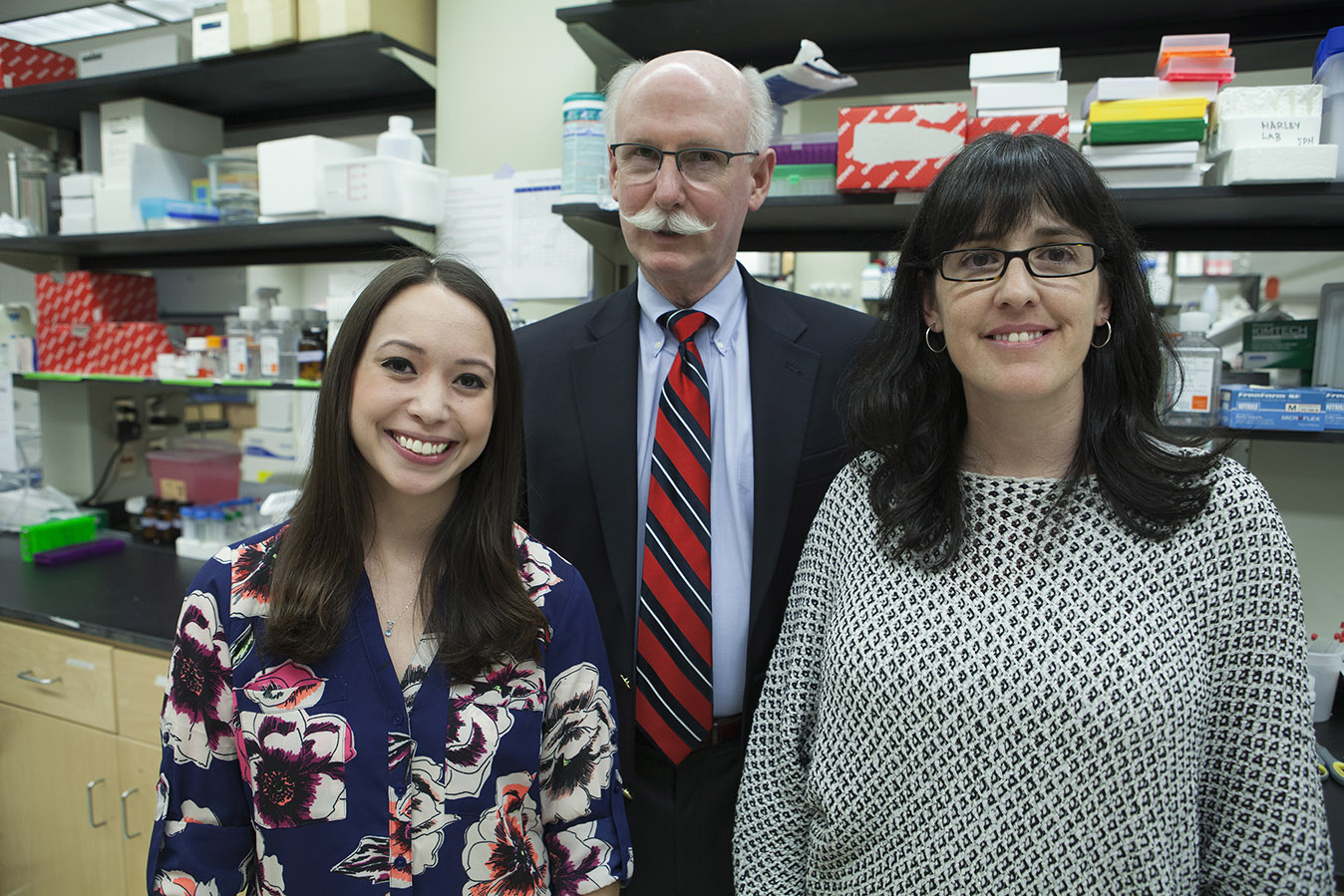Seed funds from alumnus furthers cell culture models of neurological diseases
Neurological diseases such as Alzheimer’s disease, Parkinson’s disease, and multiple sclerosis affect millions of people worldwide and yet, there exist no known cures. Multiple sclerosis, a disease that causes deterioration of the nerves due to miscommunication between the brain and body, was of particular interest to Illinois alumnus Scott Fisher. As an alumnus, Fisher had a desire to give back to the university but to also honor his late wife Bonita J. Fisher, who was diagnosed with multiple sclerosis.

Driven by this desire, Fisher initiated the Director’s Innovation Fund, which fueled the collaborative nature of the IGB by supporting research conducted in the Gene Networks in Neural & Developmental Plasticity (GNDP) and Regenerative Biology & Tissue Engineering (RBTE) themes. As a result of the seed funds, Professor of Cell and Developmental Biology Lisa Stubbs (GNDP theme leader) and Robert W. Schaefer Professor of Chemical and Biomolecular Engineering Brendan Harley (RBTE theme leader) were further funded by the National Cancer Institute within the National Institutes of Health (NIH) to use three-dimensional hydrogel systems to study neurodegenerative disease models, particularly Alzheimer’s disease.
“The funding from Scott Fisher was essential for us,” said Harley. “It allowed us to gather the preliminary data we needed to show that we could adapt the biomaterials we are developing to study brain cancer in order to investigate processes related to neurodegeneration. With that data, we were able to talk with Lisa who brings in expertise in neurodegeneration and then put together a proposal to the NIH as a supplement to our existing grant.”
Alzheimer’s disease, a neurodegenerative disease, is characterized by an accumulation of extracellular beta-amyloid (Aβ) plaques that can be exacerbated by hypoxia. Nevertheless, the contribution of hypoxia towards progression and pathogenesis of such neurodegenerative diseases remain poorly understood. Although animal models have provided some understanding of neurodegenerative diseases, translation of results into human clinical trials have been unsuccessful. Therefore, advanced biomaterial platforms have become more favorable, as they allow for replication of the diseased microenvironment and differentiation of neural cells into relevant lineages.
In a proof-of-principle study led by Research Assistant Professor Sara Pedron-Haba, PhD student Samantha Zambuto, and postdoc Julio Serrano, hydrogels, which are polymers used for soft tissue regeneration, were demonstrated as viable cell culture platforms for investigating neurodegenerative processes. More importantly, the hydrogel system could be used to investigate the effects of hypoxia-mediated stress on neural cell populations. Their findings were reported in the journal MRS Communications.

“We had the initial idea about looking at oxidative stress because it’s related to many of the diseases, but especially the brain because the brain needs a lot of energy,” said Pedron-Haba. “We build materials that polymerize with the enzyme laccase that consumes oxygen so that the oxygen concentration will go down and cause oxidative stress.”
According to Pedron-Haba, the ultimate goal for the project is to be able to use neural stem cells derived from diseased patients of Alzheimer’s and to study the effects of hypoxia on Aβ metabolism.
“We are now setting the stage to study particular features of diseases,” said Pedron-Haba. “We are looking at oxidative stress and how systemic diseases such as heart failure affects blood flow into the brain. If that decrease in blood flow is created in oxidative stress and damages the blood vessels, then maybe that leads to accumulation of Aβ or destruction of the neuronal network.”
Now equipped with a suitable cell-culture platform, they can now study particular features of other neurodegenerative diseases such as multiple sclerosis.
“This supplement is letting us expand the work Scott helped initiate,” said Harley. “Each is a stepping stone to larger scientific questions, but honestly without the initial seed from Scott this never would have gotten off the ground.”
